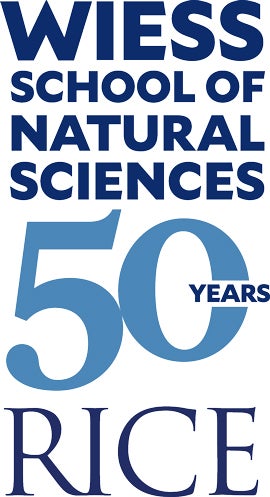
About 450 light-years from Earth, a young star is emerging from a stellar nursery in the constellation Taurus. Like many early-stage stars, it is surrounded by a vast, swirling disk of dust and gas, where particles collide and stick together to form planets. In a way, astrophysics major Arturo Amarilla’s journey isn’t so different — starting from childhood dreams in Paraguay and coming together into something extraordinary at Rice.
Arturo’s love for astronomy began in childhood, sparked by watching Interstellar and Cosmos with his father. But in Paraguay, where no university offers an astronomy program, he struggled to see it as a career path. That changed when he met Paraguayan and other Latin American researchers who had made astronomy their profession. “That’s when I could see myself doing that, too,” he said.
Knowing he had to look beyond Paraguay to achieve his dream, Arturo researched universities in the United States. He was drawn to Rice for its Houston location and ties to NASA. “It was an instant click. And then I talked to a senior student, and I was convinced,” he said.
Now in his junior year, Arturo works in Andrea Isella’s lab, studying how our solar system came to be. “We can’t go back in time to see its formation, but we can look at other systems and compare them to ours. If they’re different, we try to understand why,” he said.

Isella’s group focuses on T-Tauri stars — young, developing stars named after a prototype in the Taurus stellar nursery. These stars are surrounded by vast disks of dust and gas, the building blocks of future planets. By studying their composition and structure, researchers gain insight into how early-stage stars evolve into complex planetary systems.

Radio telescopes like the Atacama Large Millimeter/submillimeter Array (ALMA) capture high-resolution images of these planet-forming disks, which can extend over 100 times the distance from Earth to the Sun. These images reveal changes in brightness and temperature as developing planets carve out orbital paths.
“My job right now is running thermal simulations of T-Tauri stars and examining the temperature distribution throughout the disk,” Arturo said. “Temperature changes tell us a lot about the conditions in the disk.” By fine-tuning parameters to match telescope data, the team improves their models of planet formation.
As Arturo nears success with his first star system simulation, his work is far from over. “Extending our work to other T-Tauri stars will help us determine if these procedures can be generalized to all T-Tauri stars or if they are unique to each star,” he explained.
Arturo plans to continue studying T-Tauri stars through his senior year at Rice and hopes to pursue a graduate degree in astronomy. As Latin American astronomers once inspired him, he hopes to mentor and empower the next generation. “There is a lot of potential in Latin America — a lot of young minds that need support,” he said. “I want to connect with others and help grow this field in Latin America.”
Just like the stardust in his research will someday become planets, Arturo’s own journey is still taking shape. He hopes that for aspiring astronomers in Latin America, seeing someone like themselves succeed in a field that once seemed out of reach can be just as transformative — turning distant dreams into real possibilities.

